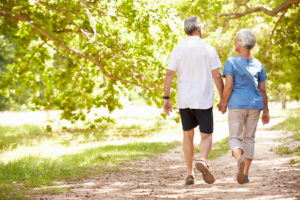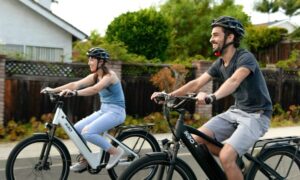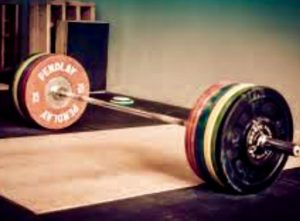Let's talk about varicose vein exercises. We all know that exercise is good for your general health. But when vein disease gives you varicose veins, some exercises will help you, while others can hurt your condition. Usually, exercising more will make your veins bigger. That's because they have to send all that pumping blood back to your heart. And, evidence suggests that the more you exercise, the healthier your veins will be as well. Basically, exercise gets your blood pumping, so it flows up your vein faster. That creates “shear stress” on your vein wall. Which causes vein wall cells to secrete nitric oxide. This is a chemical that preserves your vein wall health. So, for the most part, exercise is key to improving your vein health.
In certain cases, however, exercises may cause vein problems. Especially if you already have varicose veins. Want to get your veins healthy the right way? Read on for our ‘dos’ and don’ts’ of exercising with varicose veins. Please note that we recognize many readers will currently be avoiding the gym, so we've included recommendations for great, at-home exercise options.

First things first: if you have vein disease, talk to your doctor before beginning any new exercise programs. Once you’re cleared for activity, our Houston and Dallas area vein specialists recommend starting with low-impact workouts like walking, bicycling or swimming.
Why are these great choices? First of all, you can try any of these activities while following social distancing guidelines. Plus, we like vein disease sufferers to use their legs. When you do, you strengthen those muscles, making them contract harder and helping push blood out of your legs and back up to your heart.
In other words, stronger calf muscles make for better circulation. And that means you're likely to experience pooling blood and other complications associated with venous insufficiency.
And, in addition to circulatory benefits, you can expect to see other positive effects: you will likely lose weight, lower your blood sugar levels and keep your blood pressure down, helping improve your vein health—and keeping the rest of your body in tip-top shape.
While workouts can help improve symptoms of existing varicose veins, or reduce your risk for developing new ones, exercise alone won't get rid of veins that already bulge or twist.
After a workout ends, the appearance of those veins may improve for a while. But that change will be temporary. Because, without vein treatment, those varicose veins aren't going away on their own.
So, now you know, you can't make varicose veins disappear with exercise. Yet you can boost your vein health and reduce certain symptoms with physical activity. The key to getting all these benefits? Picking the right kinds of movement.
While running is unlikely to cause varicose veins, the exercise may temporarily make your existing symptoms worse. At the same time, running is a great way to strengthen calf muscles. And that, as we just mentioned, can be a great way to get blood pumping and reduce your risk for more vascular problems.
So, is running with varicose veins a good idea? Here's the story: first, you have to clear this level of activity with your healthcare provider, or with one of our vein specialists. Then, be smart about your running program. Choose softer training surfaces, like grass or a track, to reduce the impact on your lower extremities.
Also, ease into your routine, going at a slow and steady pace for no more than 20 minutes while you're getting used to this new activity. Then, if you feel good, continue gradually increasing your running duration. But if your varicose vein symptoms worsen while you run, take a break and choose a different form of exercise. (You can also ask us if compression stockings for runners could help you keep on training.)

While bicycling is a good vein health exercise, be careful about extended cycling routines. Serious bicyclists are more vulnerable to a kind of varicose vein known as a perforator vein. Perforator veins take blood through your muscles to your deep veins, where it goes back up to your heart. Your legs have about 150 perforator veins, and their valves come under pressure when you bike. Why?
Serious cycling puts lots of pressure on your calf muscles. It starts when you push pedals. Then, it causes huge pressure in your leg, which should cause your blood to push back to your heart. That's why vein specialists often recommend bike riding as a good exercise for varicose veins.
Unfortunately, in some cases that pressure is too much for your valves, causing them to fail. While we don't know exactly why this happens, studies suggest it could be a result of hunched postures or other contributing factors.
Want to prevent cycling complications? Just use caution when you bike ride. Try to practice good posture, and don't push yourself too hard, especially if you already have varicose veins. After all, studies still suggest that your potential vein benefits outweigh the chance of popping a valve. So just proceed with caution and follow your doctor's advice.
When you have varicose veins, some workouts might actually worsen your condition. We tell our patients to avoid exercises like lifting weights, squatting, or even some yoga poses. So now's not the time for a new, at-home yoga routine. Without the guidance of an instructor, it will be hard to make vein-safe modifications.
Running can also be a problem. Now, it may be ok to take a light jog on a grassy surface or on a trail. But pounding your legs on a treadmill or concrete surface puts lots of pressure on your feet and legs. Which is a big problem for varicose veins.
Here's why: Anything that increases pressure on your abdomen and lower body is not recommended, since it can reduce or stop the amount of blood flowing from your legs back to your heart. That, in turn, may allow blood to pool in your legs, causing your veins to stretch out and, possibly, fail.
 It’s also important to know that high-impact exercises, such as running and jogging, may cause your varicose veins to swell more, although wearing compression stockings and sticking to soft training surfaces can help lessen the impact of this form of exercise. But walking is always a great, lower impact option!
It’s also important to know that high-impact exercises, such as running and jogging, may cause your varicose veins to swell more, although wearing compression stockings and sticking to soft training surfaces can help lessen the impact of this form of exercise. But walking is always a great, lower impact option!
Contrary to what you may have heard, varicose veins are more than just a cosmetic concern. They are a sign that something has gone seriously wrong within your circulatory system. For that reason, you should see a vein specialist as soon as you notice a vein that’s getting darker or sticking out above the profile of your skin, even if our initial consult is remote. The earlier we catch and treat varicose veins, the less likely it is that your vein disease will be able to progress. So please reach out today and request a Telemedicine or in-office visitrequest a Telemedicine or in-office visitrequest a Telemedicine or in-office visit.

Scheduling
Please contact our dedicated specialists to schedule a consultation today.
2024 Texas Endovascular. All rights reserved. Website Design by Healthcare Success